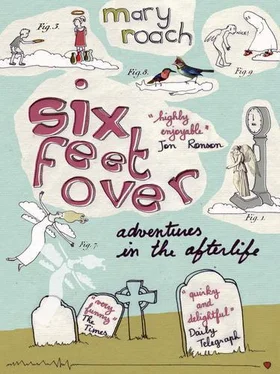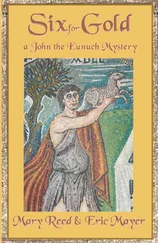The other argument for the primacy of sperm was that they moved. They appeared to possess some kind of animating spirit. On the other hand, if sperm was an animal, did that mean that it ate and defecated and copulated? Pinto-Correia’s book includes a detailed drawing by an overimaginative French embryologist purporting to show the wee digestive system of the human sperm. But if sperm hatched humans, who or what hatched sperm? Not surprisingly, there were competing theories as to sperm’s function. Some thought sperm had nothing to do with reproduction, and guessed them to be a symptom of testicle disease. Others thought the wrigglers’ job was to incite the male into having sex, presumably by causing some kind of physical itch or discomfort, though I like to envision a sort of Woody-Allen–style team effort involving tiny megaphones and shouts of encouragement.
The debate dragged on until Oskar Hertwig came along to set things straight. Following the discovery of conception, the question of the hour became: When does the soul enter this new being, this cellular amalgam of male and female? Conception—the mystical fusing of egg and sperm—was the logical choice, quickly supplanting Aristotle’s notion of the evolving soul.
Contemporary debate over the morality of abortion and stem cell research has sparked renewed interest in the timing of human ensoulment. The best book I found on the topic is a Cambridge University Press publication by Norman Ford, called When Did I Begin ? Ford, a moral philosopher and a Salesian Catholic priest, makes the clean and quite elegant argument that personhood—to use the more secular term for ensoulment—cannot begin until after the point where identical twinning is no longer possible: about fourteen days after conception. Up until that point, it’s possible for the zygote to become two identical twins. If the soul had arrived at conception, what would happen then? Would it split into two, each twin making do with half a soul? No, Ford argues. Up until that point, the zygote—with its potential to become two distinct and separate human beings—cannot rationally be referred to as a person. “I contend that the cell cluster can best be understood as human biological material but not a unified living human organism,” he writes.
As for exactly what point after the fourteenth day personhood might begin, that is less clear. The fourteenth or fifteenth day heralds the arrival of the primitive streak, the early vestiges of the neurological system, and some argue for this point. But no one—at least on a scientific basis—knows for sure when the soul, the spirit, the self, is instilled, or installed, or whatever process it uses to get itself in there. Or what it consists of or where it’s located. Or even if it exists. Which brings us back to our basic quest.
Descartes became a familiar sight at the butcher shops in Amsterdam, where he would buy freshly slaughtered animals. When visitors asked to see his library, he would take them into a room where he kept carcasses in various stages of dissection. “These are my books,” he would say.
The above passage, from science writer Carl Zimmer’s Soul Made Flesh, [6] Zimmer’s book is about the dawn of neuroscience: the first men to open up heads and figure out how brains worked. Zimmer once edited a story of mine for Discover , a situation from which he’s probably still recuperating. The guy is smarter than anyone I know. If you were to open up his head, his brain would burst out like an airbag.
describes one of philosopher René Descartes’s lesser-known projects: to figure out the workings of the human machine. One of the specific things Descartes was doing with his carcasses was looking for the soul. He assumed it resided somewhere in the brain, and so his most well-thumbed “books” took the form of cow heads. One paragraph up, Zimmer writes that Descartes spent much of that period of his life in self-imposed exile, “craving solitude.” The carcasses surely helped.
Descartes is one of the few early philosopher/scientists to have physically searched for the soul, actually opened up bodies and looked for it. He eventually nominated the pea-sized pineal gland. To those who know the gland’s actual function (it regulates melatonin production), it may seem an unlikely choice. Descartes was swayed by the gland’s position at the center of the head, and by dint of its being one of the few brain structures that don’t exist in pairs. He didn’t think the ugly little gland was the soul per se; more that it was a sort of hub, a meeting point for sensory information and the flowing streams of spiritus (akin to Aristotle’s pneuma) that carried out the self ’s higher functions.
Descartes dreamed up an elaborate model of the nervous system with strings and valves and tiny bellows. He described spiritus flowing through the nerves—which he envisioned as tubular—and into the muscles, causing them to contract by inflating parts of them. In a paper called “On the ‘Seat of the Soul’: Cerebral Localization Theories in Mediaeval Times and Later,” neurologist O. J. Grüsser writes that Descartes’s model for this system was the organ, then in its heyday as a popular musical instrument. Fifteen centuries earlier, Grüsser adds, the Greek physician Galen based his system of spiritus flow on the mechanics of Roman bathhouse heating systems. Meanwhile, the philosopher Albertus Magnus found inspiration in the equipment used to distill brandy. And so it went, on into the twentieth century, when tape recorders and computers took hold as the working models of consciousness.
A couple years back, I corresponded with a computer professional named Betty Pincus, who has been in the industry some forty years. “It always interested me the way some of my colleagues would use the technical vocabulary to describe how their minds worked,” she wrote. “In the sixties, they talked about ‘running out of tape’ or ‘her accumulator overflowed.’ As the technology changed, it became ‘running out of disk space’ or ‘multitasking.’ I’ve often wondered whether the inventors of these machines created them in their own image of how their minds worked or if they related the machine to the mind after the machines were created.”
I managed to find only two other references to scientists rummaging around in corpses looking for souls. One comes from the Midrash, a collection of ancient rabbinical commentaries on the Torah. The Midrash makes reference to a single indestructible bone, called the luz. The luz is shaped like a chickpea (or an almond, depending on which rabbi you listen to) and located at the top of the spine (or the bottom, depending on which rabbi you listen to). From this bone, the Midrash states, a person is reconcocted after death. It’s the soul bone.
The Midrash includes a description from the Torah of an experiment to prove the unique indestructibility of the luz. The project was carried out by Rabbi Joshua ben Hananiah upon being confronted by the Roman emperor Hadrian. “Prove it to me,” Hadrian is quoted as saying. So the rabbi did. “He had one brought….” (Like he just turned to some underling: Smetak! Fetch me a luz! ) “He put it in fire, but it was not burnt, he put it in a mill but it was not ground. He placed it on an anvil and struck it with a hammer; the anvil split and the hammer was broken but all this had no effect on the luz.”
Needless to say, there was much chatter about the luz over the centuries, and when the science of anatomy began to gain momentum in the Middle Ages, its practitioners sought to find it. They nominated, among other bones, the coccyx, the sacrum, the twelfth dorsal vertebra, the wormian bones of the skull, and the tiny sesamoid bones of the big toe. Of course, these bones are all easily destroyed, and the anatomists eventually decided it was a matter best left to the philosophers. The famed Renaissance anatomist Vesalius, having spent an afternoon mucking around with a set of sesamoid bones, more or less laid the matter to rest: “We should attach no importance whatever,” he wrote in De humani corporis fabrica , “to the miraculous and occult powers ascribed to the internal ossicle of the right great toe.”
Читать дальше











